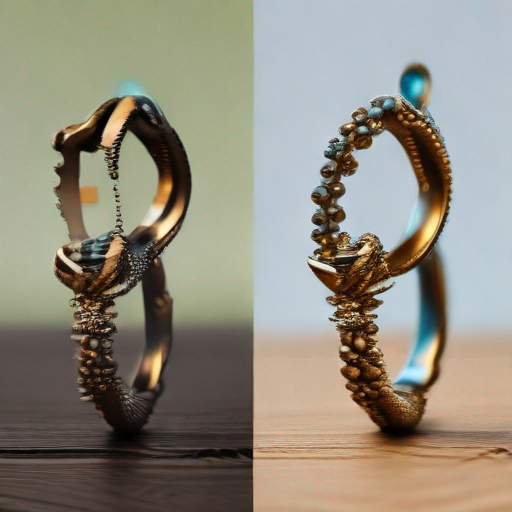
How to Remove Rust from Jewelry: Restoring Shine and Beauty
Rust can be a pesky problem for jewelry enthusiasts, causing tarnished finishes and dulling the once-sharp sparkle of precious metals. But fear not, dear readers! With the right techniques and household items, you can learn how to remove rust from jewelry and restore its original shine.
Understanding Rust: Why it Forms and How to Prevent it
Before diving into the removal process, let's take a brief look at why rust forms in the first place. Rust is an oxidation reaction that occurs when metal reacts with oxygen and moisture in the air. This can happen when jewelry is exposed to humidity, saltwater, or other corrosive substances.
To prevent rust from forming in the future, consider taking these precautions:
- Store your jewelry in a dry, cool place away from direct sunlight.
- Avoid exposing your jewelry to harsh chemicals or cleaning products.
- Use a soft cloth and mild soap when cleaning your jewelry, avoiding abrasive materials that can scratch the surface.
- Consider coating your jewelry with a clear lacquer or varnish to create a barrier against moisture.
Removing Rust: A Step-by-Step Guide
Now that we've covered why rust forms and how to prevent it, let's move on to the removal process. Here are some effective methods for removing rust from jewelry:
Method 1: Baking Soda and Water
- Mix 1 tablespoon of baking soda with 2 tablespoons of water to form a paste.
- Apply the paste to the rusty area using a soft-bristled toothbrush or cotton swab.
- Let it sit for about 15 minutes, then rinse with warm water and dry with a soft cloth.
Method 2: Vinegar and Water
- Mix equal parts white vinegar and water in a small bowl.
- Soak the jewelry in the solution for several hours or overnight.
- Rinse thoroughly with warm water and dry with a soft cloth.
Method 3: Lemon Juice and Salt
- Cut a lemon in half and squeeze the juice onto the rusty area using a cotton swab or soft-bristled toothbrush.
- Sprinkle a small amount of salt over the affected area.
- Let it sit for about an hour, then rinse with warm water and dry with a soft cloth.
Table: Rust Removal Methods at a Glance
| Method | Ingredients | Application Time |
|---|---|---|
| Baking Soda & Water | 1 tbsp baking soda + 2 tbsp water | 15 minutes |
| Vinegar & Water | Equal parts white vinegar and water | Several hours/overnight |
| Lemon Juice & Salt | Lemon juice, salt | 1 hour |
Tips for Removing Rust from Jewelry
- Always test a small, inconspicuous area of the jewelry first to ensure the removal method won't damage the metal or any surrounding materials.
- Avoid using harsh chemicals or abrasive materials that can scratch or damage the jewelry.
- For more stubborn rust, consider soaking the jewelry in a solution of equal parts water and white vinegar for several hours or overnight before attempting removal.
Restoring Shine: Polishing After Removal
Once you've removed the rust from your jewelry, it's time to restore its original shine. Here are some tips:
- Use a soft cloth and mild soap to gently clean the jewelry.
- Apply a small amount of jewelry polish or toothpaste to a soft cloth and rub it onto the affected area in circular motions.
- Buff the jewelry with a soft cloth to remove any excess polish or residue.
Conclusion: Removing Rust from Jewelry
Removing rust from jewelry may seem like a daunting task, but with these simple methods and household items, you can restore your jewelry's original shine. Remember to take precautions to prevent rust from forming in the future, such as storing your jewelry in a dry, cool place away from direct sunlight.
Learn More: How to Remove Rust from Jewelry
For more information on removing rust from jewelry, check out Rather Pretty's comprehensive guide for expert tips and tricks.
Key Takeaways:
- Understand why rust forms and take precautions to prevent it.
- Use household items like baking soda, vinegar, and lemon juice to remove rust from jewelry.
- Always test a small area first to ensure the removal method won't damage the metal or surrounding materials.
- Restore shine by polishing after removal using a soft cloth and mild soap.
